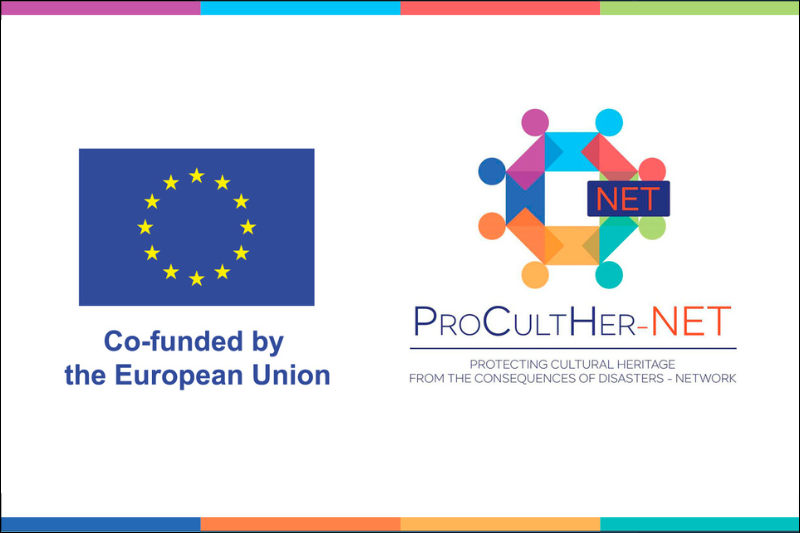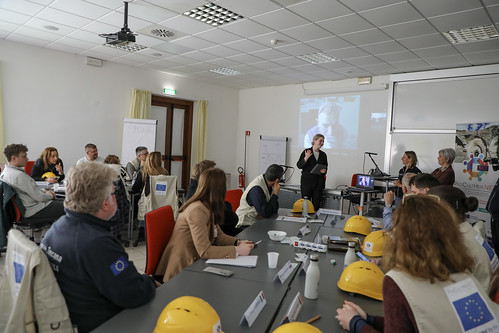Proculther-Net

The PROCULTHER-NET- Protecting Cultural Heritage from the Consequences of Disasters-Network project ran from 2022 to 2023. It was coordinated by the Civil Protection Department and co-funded by DG ECHO under the Union Civil Protection Mechanism to build a community committed to the protection of cultural heritage during emergencies.
The growing impact of natural and human-made risks, amplified by the COVID-19 pandemic and climate change, has caused a considerable increase in disaster risk factors, endangering cultural heritage as well. With the establishment of the EU Civil Protection Knowledge Network, the European Union aims to strengthen the Union Civil Protection Mechanism by engaging all those operating in disaster risk management in productive collaboration and learning from mutual experiences.
These are the premises on which PROCULTHER-NET-Protecting Cultural Heritage from the Consequences of Disasters-Network, the project coordinated by the Civil Protection Department and co-funded by DG ECHO-Directorate General for European Civil Protection and Humanitarian Aid Operations under the Union Civil Protection Mechanism, kicked off in January 2022.
To enable the mapping of stakeholders and identify training needs from the beginning, the PROCULTHER-NET Consortium also released a survey to all interested stakeholders to shape activities based on the results obtained. Key activities carried out during the project include:
- Two rounds of an advanced training program were conducted, with the participation of 70% of UCPM countries. The program involved 60 experts from the civil protection and cultural heritage protection sectors, as well as humanitarian and academic stakeholders.
- A training session was organized to facilitate capacity-building activities at the national level. This session was intended for 24 expert trainers from countries participating in PROCULTHER-NET. Among the participants, 41% were from disaster risk management, 45% were from the cultural heritage field, and 11% had interdisciplinary expertise.
- Technical Bulletins were released to promote interdisciplinary exchange practices and establish a European thematic community focused on the protection of cultural heritage at risk. These publications feature dedicated sections on prevention, preparedness, response, and recovery, as well as a "focus on" section that explores cross-sectoral topics.
The project, which concluded in 2023, consolidated the results achieved from 2019 to 2021 by the PROCULTHER- Protecting Cultural Heritage from the Consequences of Disasters project to strengthen and expand the community of experts ready to operate during emergency situations and able to counter the effects of disasters on cultural heritage, both at the national and European level.
To enhance the interoperability standards of the Union Civil Protection Mechanism, to strengthen the process of learning and knowledge sharing, and to integrate the European Union's efforts in safeguarding cultural heritage.
These are the main objectives of the PROCULTHER-NET project, which have been achieved through specific lines of action, including training and education activities, thematic workshops, and the drafting of guidelines and memoranda of understanding to support the community dedicated to the protection of cultural heritage in emergency situations.
Other products produced to support the achievement of project objectives include:
- The publication of "Key elements of a European Methodology to Address the Protection of Cultural Heritage during Emergencies". This methodology, grounded in lessons learned and best practices from project partners, provides a set of elements to advance preparedness and response activities with a view to including the protection of cultural heritage in all disaster risk management processes.
- The development of minimum requirements for a response module led by the Union Civil Protection Mechanism capable of intervening and supporting national response actions worldwide to protect cultural heritage at risk.
In view of these achievements, the Proculther-Net Community engaged new stakeholders to support and complement the European Union efforts in the field of civil protection for the inclusion of cultural heritage protection in all the stages of risk management.
The Consortium managing the project included: the Civil Protection Department, as coordinator, the ICCROM- International Center for the Study of Conservation and Restoration of Cultural Heritage, the Ministry of Interior - Disaster and Emergency Management Authority-AFAD (Turkey), the German Archaeological Institute-DAl (Germany), to the Ministry of the Interior-Directorate General of Civil Security and Crisis Management-DGSCGC (France), the Hallgarten Foundation-Franchetti Centro Studi Villa Montesca- FCSVM, the Ministry of Culture and Tourism of the Government of the Castilla y León Region-JCyL (Spain), the Federal Agency for Technical Relief-THW (Germany), UNISOB-University Suor Orsola Benincasa (Italy), and the University of Porto-U.PORTO (Portugal).
